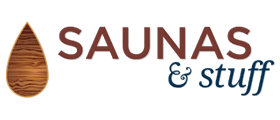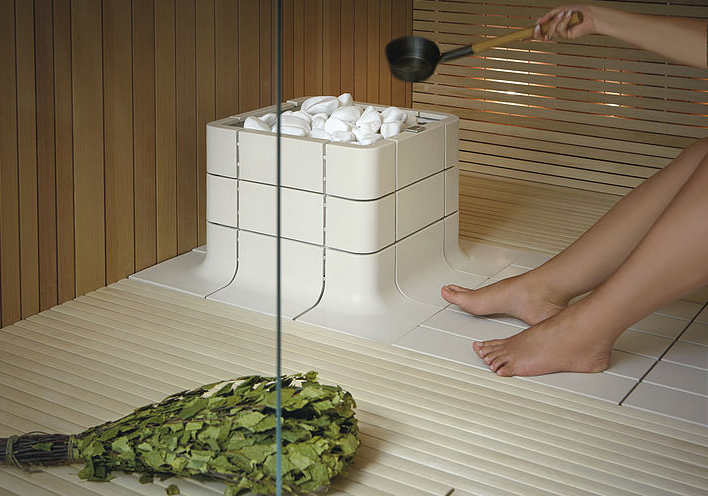If you are a sauna aficionado, the one word you really need to know is löyly. It is an old, magical word associated strictly with sauna use in modern times, and it's a really beautiful thing.
What is Löyly? And How the Heck Do I Say It?
Löyly derives from the Proto-Finno-Urgic word lewl meaning "spirit" or "soul". Click here to here it pronounced. In modern usage it means the steam that radiates from sauna rocks when water is poured or sprinkled over them. The water evaporates on contact with the hot rocks, and the humidity of the air increases. This contributes to a perception of increased temperature and causes the body to sweat more. On a more spiritual level, it means the entire feeling of the heat as it envelopes you, as well as the steam that fills the room. It is considered a tangible thing, with qualities that can vary due to many factors (keep reading to get an idea of the different factors involved).
Löyly's restorative and healing powers are so revered that it was once thought that it could drive out diseases and even resolve unhappiness in romantic relationships. While scientifically unfounded, there's no doubt that sharing a sauna with your sweetie is conducive to good relations.
To drive home the importance of löyly in Finnish culture and sauna culture, it's considered an honor to have the responsibility of adding the löyly to the room when with a group of people. At that point, it's not simply pouring water on hot rocks: it's an art that strives to create the right amount of steam, and a pleasurable experience, for all the present people by working with heat and water. Getting the balance right take experience and skill.
How Do I Make Good Löyly?
Just as it can be hard to describe what makes good art, it's hard to define what makes good löyly. Partly, it will be subjective to a bather's preferences and comfort levels. Overall, good löyly is determined by the purity, temperature, and humidity of the air inside the sauna, as well as its thermal radiation. The sauna air must not contain any gaseous impurities, particles, or micro-organisms. This is ensured through effective ventilation and the condition of the sauna: is it clean? Is it constructed from quality materials that were properly treated? A clean, nicely built sauna will also contribute to a more pleasurable overall experience.
The Basics of Good Löyly:
Before using any water, the temperature of the sauna air should be 150°F (65.5ºC) or greater.
As the room heats, fill a bucket intended for sauna use with water. It is important that you do not use just any bucket--plastic buckets can melt or release impurities into the air, and metal buckets can get very warm and become a burn hazard. A good option would be this bucket and ladle set available through us here at Saunasandstuff.com. Never take anything into a sauna that was not intended for use in the sauna.
Decide whether to go with clean, natural water, or whether to add an essential oil. Purists may insist on fresh, clean water, but adding an essential oil can significantly change and possibly improve the sauna experience. Different oils have different effects by releasing their fragrance into the air: Eucalyptus is good for congestion or allergy sufferers, lavender can aid relaxation, citrus can invigorate.
Once the sauna is heated and the water is ready, fill the ladle. Again, always use a ladle designed for sauna use. The evaporation is almost instant when the water hits the rocks, and there is a chance of scalding if you do not use the ladle. Start with just a few drops of water and add just a little more at a time. The change in perceived temperature can be dramatic, so start with small amounts, wait, and then add more as needed.
For Advanced Löyly Artists:
There is something of a löyly tenet called the Rule of 200, in which the combination of temperature (in Fahrenheit) and the humidity percentage added together should equal 200. It's thought that anything that adds up to more will be uncomfortable for bathers.
So, if the sauna is set to 150°F, the ideal humidity (according to the Rule) would be at 50%. If the sauna were hotter, say 180°F, the humidity would be best at 20%. The hotter the ambient air, the lower the humidity should be.
Go Make Good Löyly
Now armed with the basics, the trick is to find what combination of heat and humidity best suits you. When with a group, it will be a challenge to find a löyly that is comfortable for everyone. With time and practice, you'll be making good löyly in no time.

















